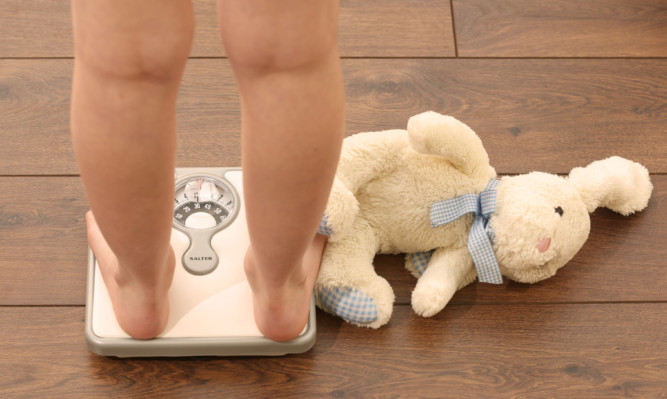Overweight primary one children have decreased slightly but there remains a strong link between deprivation and obesity, NHS figures show.
The proportion of children at risk of obesity or becoming overweight has dropped from 23.3% to 21.8%, according to figures from the NHS Scotland Information Services Division (ISD Scotland).
Body mass analysis of over 50,000 children starting school in 2014/15 revealed 77.1% were a healthy weight, up from 75.2% in 2005/06.
However, children in poor areas remain nearly 50% more likely to be overweight than children from rich areas.
A quarter (25.1%) of children in the most deprived areas are at risk of being overweight or obesity, compared with around one in six (17.1%) in the least deprived.
The proportion of overweight deprived children has risen by over three percentage points in the last five years from 22.2% in 2009/10.
An ISD report on primary one BMI in 2014/15 stated: “There is continued concern over the levels of overweight and obesity among children in Scotland.
“Obesity during childhood is a health concern in itself, but can also lead to physical and mental health problems in later life, such as heart disease, diabetes, osteoarthritis, back pain, increased risk of certain cancers, low self-esteem and depression.”
The report reveals 77.1% of primary one children in Scotland in school year 2014/15 were classified as healthy weight, a small increase from the 2013/14 figure of 76.4%.
It stated: “This small increase in the proportion of children classified as healthy weight is due to a slight decrease in both the percentage of children at risk of overweight (12.5% in 2013/14 compared to 12.0% in 2014/15) and the percentage of children at risk of obesity (10.1% in 2013/14 compared to 9.8% in 2014/15).”
The prevalence of healthy weight amongst children in primary one decreases as deprivation increases.
“In the least deprived areas, 81.8% of children were classified as healthy weight while in the most deprived areas 73.7% were classified as healthy weight,” the report added.
“In the two most deprived quintiles the proportion of children classified as healthy weight is significantly lower than the Scotland average.
“A strong positive relationship exists between deprivation and the proportion of children in primary one at risk of overweight and obesity combined.
“The level of inequalities observed are greater for children at risk of obesity compared to children at risk of overweight.
“In 2014/15 in the least deprived areas, 7.0% of children were classified as at risk of obesity compared to 12.1% in the most deprived areas.
“In the least deprived areas, 10.1% of children were classified as at risk of overweight compared to 12.9% in the most deprived areas.”
A similar ISD report in 2009/10 stated: “In the least deprived areas, 17% of children were classified as overweight (including 6.4% obese and 2.9% severely obese) while in the most deprived areas 22.2% were classified as overweight (including 9.8% obese and 5.2% severely obese).”
